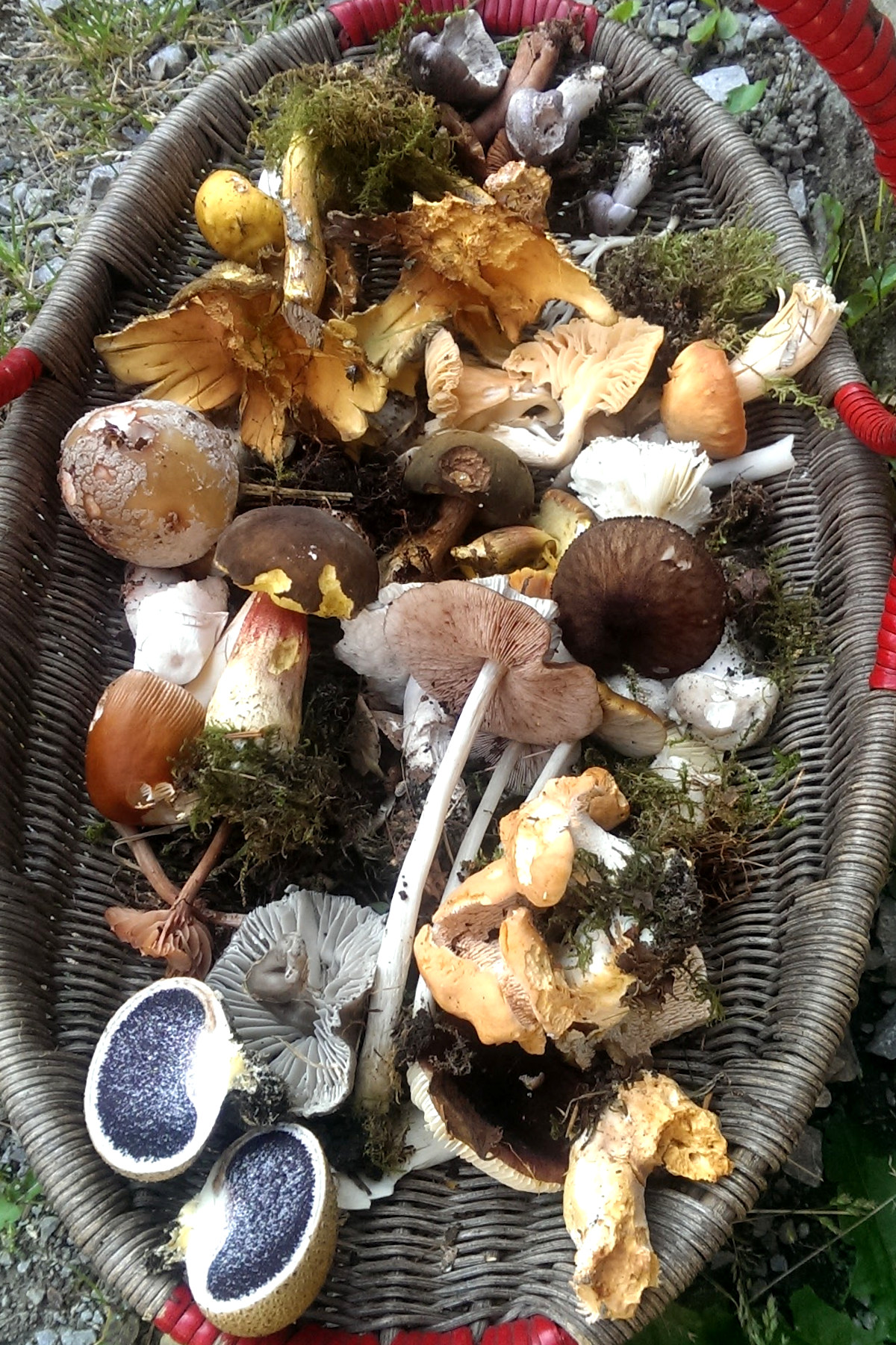Mushrooms, fungi and waxcaps at Hardcastle Crags

The variety of habitats make Hardcastle Crags and the surrounding area an excellent site to find all types of Fungi.
Table of Contents
Mushroom species you can find in and around Hardcastle Crags:
| Mushroom Species | Description | Best Time of Year |
|---|---|---|
| Oyster Mushroom | Grows in clusters on dead or dying trees, has a fan-shaped cap and white gills. | Autumn |
| Chicken of the Woods | Grows on dead or dying hardwood trees, has a bright orange or yellow cap and wavy, lacy gills. | Summer and autumn |
| Giant Puffball | The largest puffball in the world, can grow up to 2 feet in diameter. | Summer and autumn |
| Penny Bun/Porcini | Grows in groups on the ground in woodlands, has a brown cap and yellow pores. | Summer and autumn |
| Chanterelle | Grows in clusters on the ground in woodlands, has a bright orange or yellow cap and wavy, forked gills. | Summer and autumn |
| Shaggy Inkcap | Grows on the ground in woodlands, has a brown cap with shaggy scales and white gills. | Summer and autumn |
| Jelly Ear | Grows on dead or dying wood, has a gelatinous, ear-shaped body. | Summer and autumn |
| Fly Agaric | A poisonous mushroom, has a bright red cap with white spots and a white stem. | Summer and autumn |
| Razor Strop Fungus | A brightly colored mushroom, has a red or orange cap with yellow gills. | Summer and autumn |
| Field Mushroom | A common mushroom, has a white cap and gills and a brown stem. | Summer and autumn |
| Fairy Inkcap | A small, inky mushroom, has a white cap and gills that turn black as the mushroom matures. | Summer and autumn |
| Velvet Shank | A small, brown mushroom, has a velvety cap and gills. | Summer and autumn |
| Wood Blewit | A small, blue mushroom, has a blue cap and gills. | Summer and autumn |
| Saffron Milkcap | A small, orange mushroom, has a bright orange cap and gills. | Summer and autumn |
| Ink Cap | A small, inky mushroom, has a white cap and gills that turn black as the mushroom matures. | Summer and autumn |
| Hedgehog Fungus | A large, spiky mushroom, has a brown cap and spines. | Summer and autumn |
| Maitake | A large, fan-shaped mushroom, has a brown cap and white gills. | Summer and autumn |
Please note that this is just a small selection of the many mushroom species that can be found in woodland in the north of England. It is important to always consult a reputable field guide before foraging for mushrooms, as some species can be poisonous.
Waxcap mushroom species:
Hardcastle crags is or soon will be a site of special scientific interest (SSSI)for waxcaps.
| Waxcap Species | Description | Best Time of Year |
|---|---|---|
| Hygrocybe punicea | A brightly colored waxcap, has a red cap with white gills. | Summer and autumn |
| Hygrocybe conica | A small, waxcap, has a conical cap and white gills. | Summer and autumn |
| Hygrocybe quieta | A small, waxcap, has a yellow cap and white gills. | Summer and autumn |
| Hygrocybe subcoccinea | A small, waxcap, has a scarlet cap and white gills. | Summer and autumn |
| Hygrocybe sphaerospora | A small, waxcap, has a grayish-brown cap and white gills. | Summer and autumn |
| Hygrocybe flavescens | A small, waxcap, has a yellow cap and white gills. | Summer and autumn |
| Hygrocybe laeta | A small, waxcap, has a yellow cap and white gills. | Summer and autumn |
| Hygrocybe miniata | A small, waxcap, has a bright orange cap and white gills. | Summer and autumn |
| Hygrocybe cervicolor | A small, waxcap, has a pale yellow cap and white gills. | Summer and autumn |
Please note that this is just a small selection of the many waxcap mushroom species that can be found in in the land around Hardcastle Crags.
It is important to always consult a reputable field guide before foraging for mushrooms, as some species can be poisonous.
Here are some additional tips for foraging for waxcaps:
- Waxcaps are most abundant in late summer and autumn.
- Look for waxcaps in moist, shady woodlands.
- Waxcaps often grow in clusters.
- Be sure to identify waxcaps correctly before eating them. Some species are poisonous.
- If you are unsure about an identification, it is always best to leave the mushroom alone.
